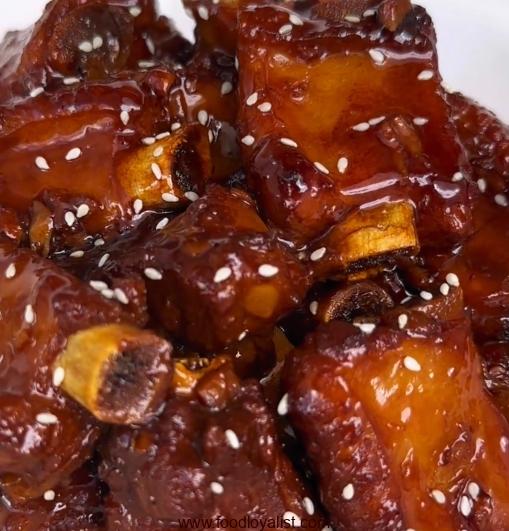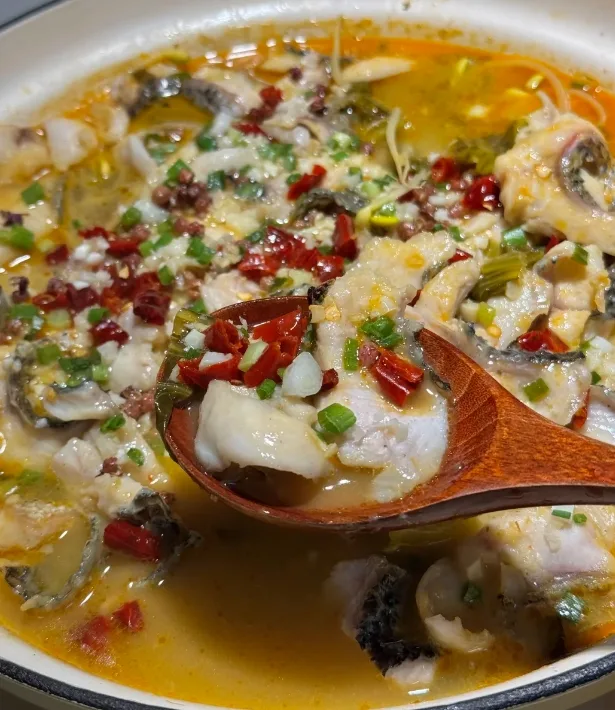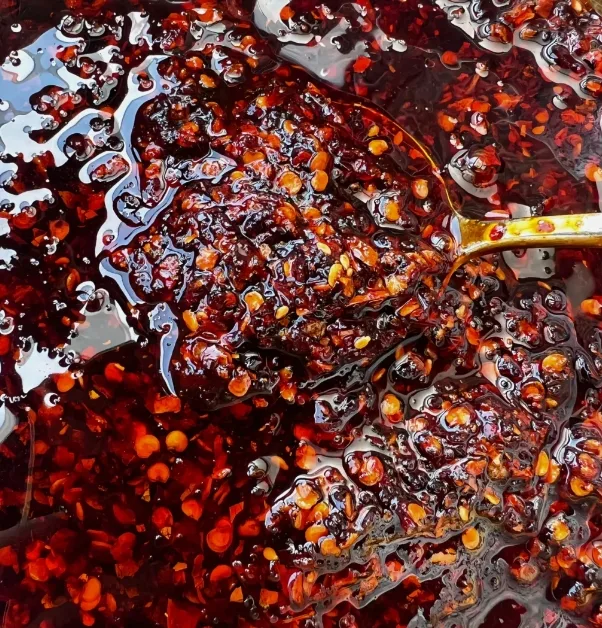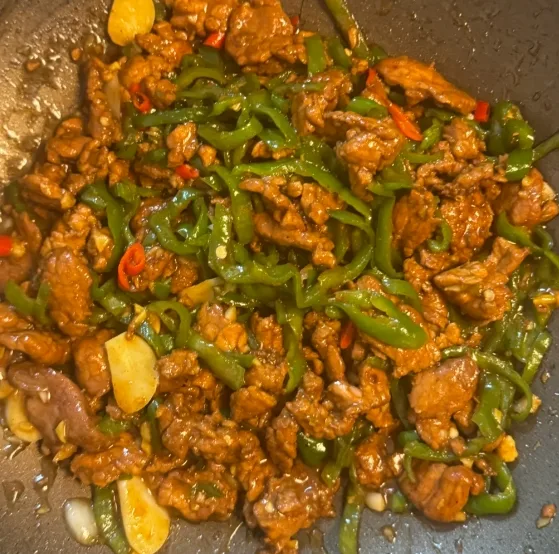Sweet and Sour Spare Ribs, as China’s national-level cooking artifact, is definitely a “meat warning” role in home-cooked dishes! If you see me over my braised pork recipe tutorial, then this sweet and sour pork you can also easily take!
Choosing the Right Ribs
To make good pork rib dishes, it is first necessary to distinguish the three parts of pork ribs: front row, middle row, and back row. There are significant differences in meat quality, taste, and applicable cooking methods among these three parts.
A complete pork rib steak usually has 16 ribs, with the first 6 ribs called the front row, the middle 4 ribs called the middle row, and the last 6 ribs called the back row
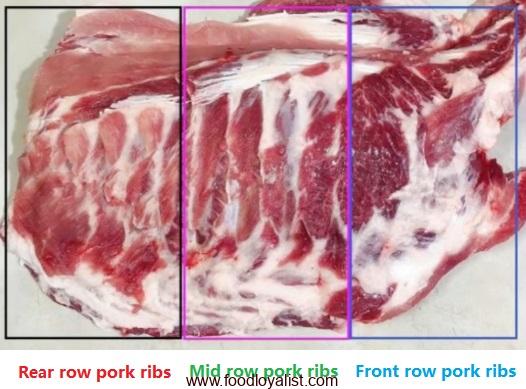
Front row pork ribs
Factors to consider
The front row ribs are located on the front legs and neck of pigs, usually with 4-6 ribs. The pork ribs in this area have more bones and less meat, but the meat is very tender and smooth, with a delicious taste. The fat content of the front row pork ribs is relatively low, and the color is usually darker because there are more capillaries in this area.
Suitable cooking methods
Due to the tender and smooth texture of the pork ribs in the front row, they are suitable for quick cooking methods such as steaming, braising, grilling, etc. These cooking methods can preserve the fresh and tender taste of pork ribs while allowing the seasonings to penetrate better. For example, steamed pork ribs can highlight their freshness, while braised pork ribs can fully absorb the sauce, resulting in a richer taste.
price
The front row pork ribs are usually the cheapest because they have a relatively small amount of meat, but they have a high cost-effectiveness and are suitable for consumers who like lean meat and have a limited budget.

Mid row pork ribs
Factors to consider
The middle row pork ribs are located in the middle of the pig’s chest, which is the “golden area” among pork ribs. The bones of the middle row pork ribs are longer, the shape is regular, the meat is evenly plump and thin, and the taste is delicate and elastic. Middle row pork ribs have a moderate amount of meat and a bright red color, making them one of the most popular pork ribs in the market.
Suitable cooking methods
Middle row pork ribs are suitable for various cooking methods, such as braised, steamed, sweet and sour, stewed soup, etc. Due to its uniform meat texture, the taste after cooking is very good, whether it is braised pork ribs or sweet and sour pork ribs, it can achieve the desired effect.
price
Middle row pork ribs are the most expensive among the three types of pork ribs because of their excellent meat quality and taste, making them suitable for consumers with high quality requirements.

Rear row pork ribs
Factors to consider
The rear ribs are located near the hind legs and waist of pigs, usually with 8-10 ribs. The pork ribs in this area have more meat and fewer bones, and the meat is firm but relatively hard. The fat content of the back row pork ribs is higher and the color is lighter because there are fewer capillaries in this area.
Suitable cooking methods
The back row pork ribs are suitable for long-term stewing, such as stewed pork rib soup or braised pork ribs. Due to its large amount of meat, it can fully absorb the broth after stewing and has a rich taste. In addition, there are more bone marrow in the back row pork ribs, which can enhance the freshness of the soup when stewed.
price
The price of pork ribs in the back row is relatively low, suitable for consumers who like more meat and have a limited budget.
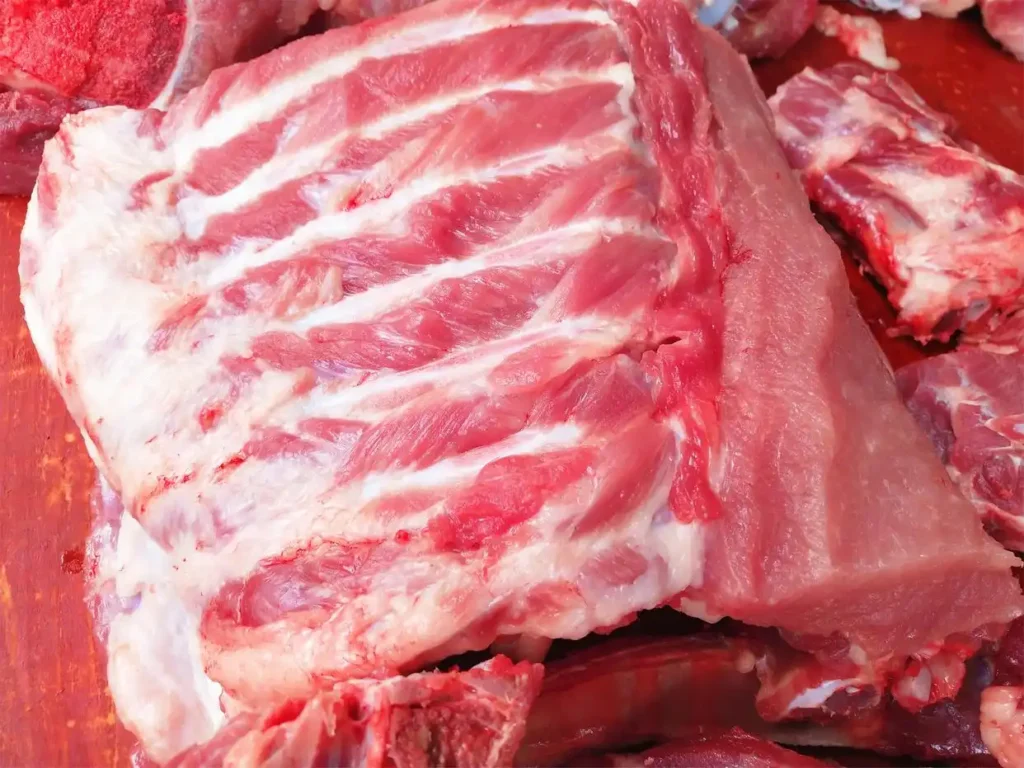
Tips for selecting pork ribs
Observe the color
Fresh pork ribs have a bright red color and shine. If the color appears dark or white, it may not be fresh.
Touch texture
Fresh pork ribs have elastic flesh and can quickly return to their original state after pressing. If the meat is soft and lacks elasticity, it may not be fresh.
Smell the scent
Fresh pork ribs have a normal meat flavor and no off flavors. If there is a sour, fishy or other odor, it may not be fresh.
Check the bones
High quality pork ribs have a smooth and undamaged surface. If there are cracks or foreign objects in the bone, it may not be fresh.
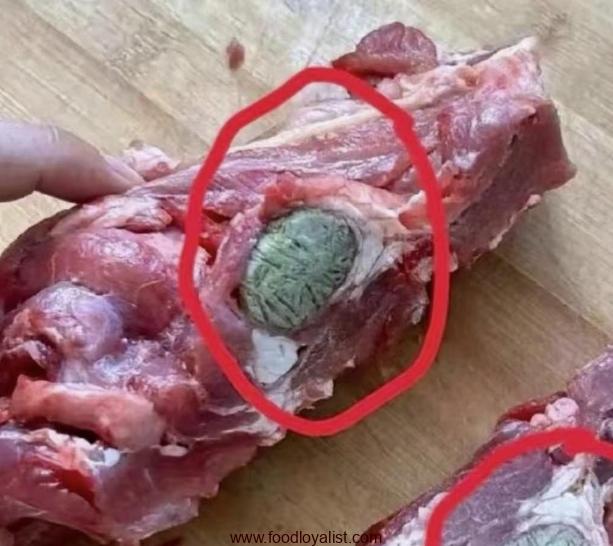
What are Sweet and Sour Spare Ribs?
The “12345” Rule
Golden Ratio: 1 Wine, 2 Vinegar, 3 Sugar, 4 Sauce, 5 Water
2 pounds of pork ribs: directly press 10/20/30/40/50g
After countless experiments, the key principle is confirmed:
The acidity of rice vinegar, sweetness of rock sugar, and umami of soy sauce must achieve dynamic balance!
1 Removing fishy smell from wine (choose between yellow wine and cooking wine)
2 layers of vinegar (add 10g when stewing, add 10g when stewing)
3 sugar in two (15g stir-fried sugar color + 15 g juice),
4 soy sauce color supplements (20g dark soy sauce+20g light soy sauce),
5 Water needs to be hot (water above 80 degrees)

Science Behind It
Vinegar evaporates when heated – staggered addition preserves layered acidity
Rock sugar outperforms white sugar in depth, enabling Maillard reaction when seared
Soy sauce and sugar create a “golden sweet-savory ratio” that prevents cloying
Failed Cases
Incomplete blanching leads to residual fishy odor
Scientific principle: Pork ribs that have not been fully blanched will leave residual blood and fat oxidation products (such as aldehydes and sulfides)
Consequence: The entire dish will have a difficult to remove fishy smell
Correct operation: The blanching time should be maintained for more than 2 minutes until no blood foam is formed
Excessive frying of sugar color produces a bitter taste
Scientific principle: Carbohydrates undergo carbonization reaction when the temperature exceeds 180 ℃
Consequence: Production of coke substances with strong bitterness, disrupting the overall flavor
Correct operation: Keep low to medium heat, the sugar solution turns amber, and immediately remove from heat
Improper timing of adding acetic acid
Scientific principle: Acetic acid has a low boiling point (118 ℃) and is easily volatile when added too early
Consequence: Only monotonous sweetness remains, losing the balance of sweetness and sourness
Correct operation: Add twice, half before stewing and half before juicing
Using cold water affects meat quality
Scientific principle: Cold water causes rapid contraction of proteins
Consequence: The flesh fibers are tight, and the taste is dry and difficult to chew
Correct operation: Hot water above 80 ℃ must be used
Excessive heat during stewing
Consequence: The soup evaporates rapidly, and the acetic acid evaporates too early, resulting in a burnt pot
Ideal state: Maintain the “shrimp eye bubble” state of slowly churning small bubbles
Correct operation: Cook on low heat and observe the water level every 15 minutes during the process
Adding pineapple for extra flavor
About sweet and sour pork with pineapple, this is a classic modified technique of Yue cuisine and Southeast Asian street-style Chinese food, which blends Lingnan food culture with the tradition of using tropical fruits in cooking.
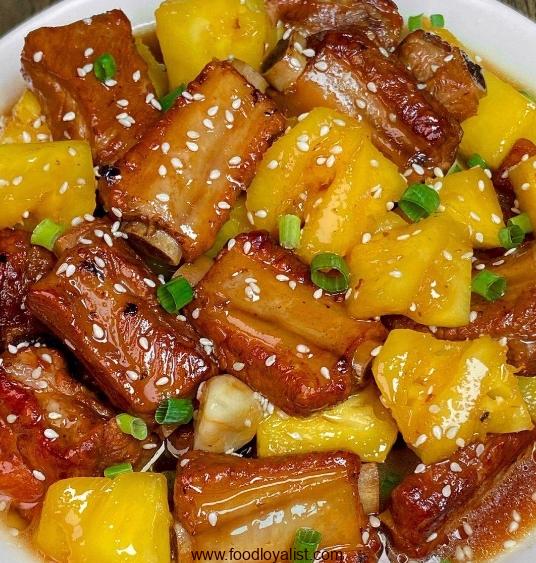
I personally love to eat pineapple very much, and adding pork ribs is quite delicious. You can feel free to try it boldly. If pineapple is added, add pineapple for the last 10 minutes instead of vinegar.
Enhanced Texture
When cooked, pineapple softens and releases its sweet-tart juice into the ribs, making the meat more tender.
The juicy bursts of pineapple pair perfectly with crispy yet tender ribs, adding layers of texture.
Balanced Flavor
The natural acidity of pineapple cuts through the richness, reducing greasiness.
Its fruity freshness brightens the sweetness (more refreshing than using just sugar and vinegar).
Sweet and Sour Pork Rib Tutorial
Cut 1kg pork ribs into 5cm pieces. Soak in water for 5 minutes to remove blood. Blanch in cold water with 20g cooking wine for 2 minutes, skim off foam, then rinse with hot water (same method as red braised pork).
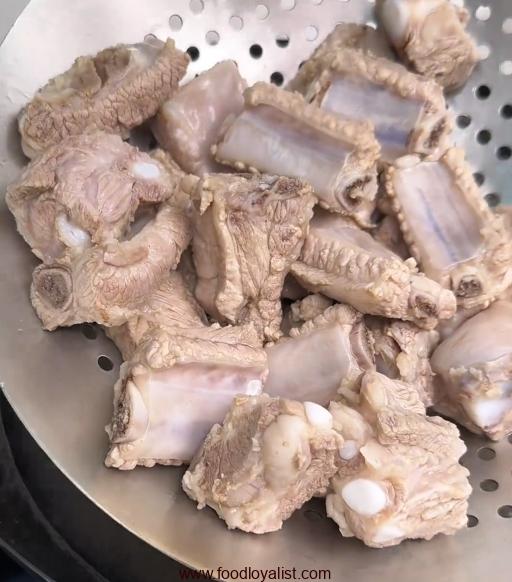
Heat oil in a wok, add 15g rock sugar and caramelize over low heat until amber. Add ribs and toss to coat evenly. Stir-fry with scallions, ginger and star anise until fragrant. Drizzle 10g rice vinegar to enhance aroma, then season with 20g light soy sauce and 20g dark soy sauce for color.
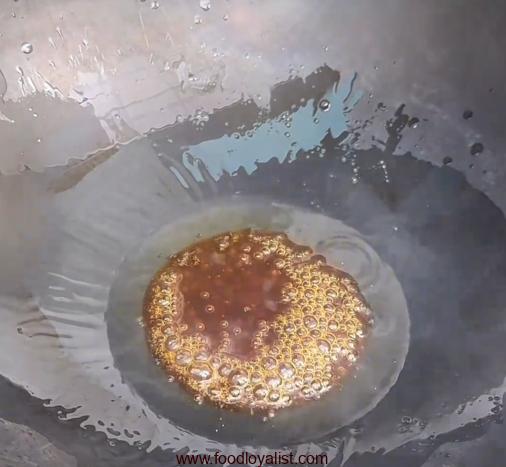
Add boiling water to submerge ribs. Simmer uncovered for 3 minutes to remove gaminess, then cover and braise on low heat for 40 minutes. Add 15g rock sugar and 2 tsp salt, continue cooking for 10 more minutes.
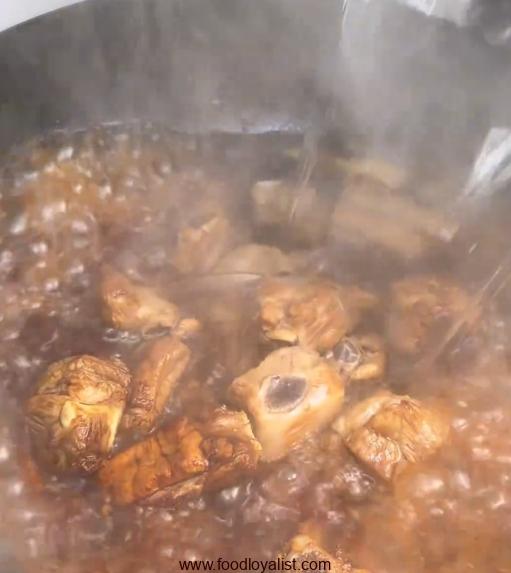
Increase heat to reduce sauce until thickened. Turn off heat, drizzle 10g rice vinegar along the wok’s edge and toss. Garnish with white sesame seeds before serving.
Teach you how to make zero failure sweet and sour pork ribs
Recipe by Chinese Food Loyalist15
minutes45
minutes1
hourIngredients
pork spare ribs (cut into 5cm pieces)
boiling water(According to the size of the pot, submerge the pork ribs)
10g (2 tsp) Shaoxing wine (for blanching)
20g (1 tbsp + 1 tsp) rice vinegar (divided)
30g (2 tbsp) rock sugar (divided)
20g (4 tsp) light soy sauce
20g (4 tsp) dark soy sauce
3 spring onion sections
5 ginger slices
1 star anise (optional)
Pineapple Upgrade (Optional)
Directions
- Cut 1kg pork ribs into 5cm pieces. Soak in water for 5 minutes to remove blood. Blanch in cold water with 20g cooking wine for 2 minutes, skim off foam, then rinse with hot water (same method as red braised pork).
- Heat oil in a wok, add 15g rock sugar and caramelize over low heat until amber. Add ribs and toss to coat evenly. Stir-fry with scallions, ginger and star anise until fragrant. Drizzle 10g rice vinegar to enhance aroma, then season with 20g light soy sauce and 20g dark soy sauce for color.
- Add boiling water to submerge ribs. Simmer uncovered for 3 minutes to remove gaminess, then cover and braise on low heat for 40 minutes. Add 15g rock sugar and 2 tsp salt, continue cooking for 10 more minutes.
- Increase heat to reduce sauce until thickened. Turn off heat, drizzle 10g rice vinegar along the wok’s edge and toss. Garnish with white sesame seeds before serving.
- fresh pineapple cubes (add last 10 mins) Adding pineapple reduces 10 grams of vinegar
Recipe Video
Notes
- The key to braised dishes is to control the heat well
- Add sugar and vinegar according to your own taste, vinegar is crucial

